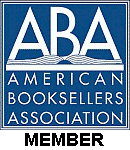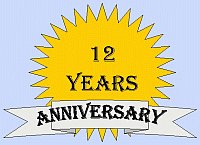Georges 'Hergé' Remi Creator of Tintin, The Final Years
by Holly Franklin with additional material by Steven Williams
The Hergé Studio was set up in April 1950 in order to lighten Hergé's workload after his second breakdown. He employed assistants such as the artist Bob de Moor to help produce The Adventures of Tintin. This was to be the case for the rest of the Tintin albums where assistants would fill in the details and backgrounds such as the lunar landscapes in Explorers on the Moon.
Bob de Moor (aka Robert Frans Marie De Moor, 1925-1992), studied at the Academy of Fine Arts in Antwerp, Belgium and made his comics debut with Bart, de Scheepsjongen (Bart, the Ship's Boy) published in De Kleine Zondagsvriend (The Little Friend Sunday) in 1945. His first album (i.e., book bound) edition was Le Mystère du Vieux Château Fort (The Mystery of the Old Castle), scripted by John van Looveren and published by Campéador in 1947. In 1949, De Moor was asked to join the magazine Kuifje (1946-1993), a Flemish (aka Belgium aka Belgian Dutch aka Belgian Standard Dutch) language magazine. Kuifje was the Flemish name for Tintin. Tintin's creator, Georges 'Hergé' Remi, was a French language speaking Belgian and from the initial creation of Tintin in 1929 until about 1946, Tintin comics had been published in the French language only.
 With the startup of Tintin magazine in 1946, there was a need to bring in additional talent both to provide more material for the magazine and to reach the additional Belgium audience of Flemish speakers. Because there are cultural as well as language differences between French speaking and Flemish speaking Belgium, it was decided to create a separate magazine, Kuifje. This necessitated hiring a Flemish speaking editor-in-chief to manage Kuifje. The man chosen for this position was Karel Van Milleghem. He was almost uniquely suited to this position because he came from a flammingant (someone who strives to bring together the French and Dutch-speaking people in Belgium) background in addition to being young, intelligent, and immensely creative. It was Van Milleghem who brought De Moor, along with a group of other gifted young Flemish comic artists and writers, to Kuifje in 1949. It was also Van Milleghem who introduced De Moor to Remi in the same year. Almost from the beginning De Moor became a regular contributor to Kuifje magazine.
With the startup of Tintin magazine in 1946, there was a need to bring in additional talent both to provide more material for the magazine and to reach the additional Belgium audience of Flemish speakers. Because there are cultural as well as language differences between French speaking and Flemish speaking Belgium, it was decided to create a separate magazine, Kuifje. This necessitated hiring a Flemish speaking editor-in-chief to manage Kuifje. The man chosen for this position was Karel Van Milleghem. He was almost uniquely suited to this position because he came from a flammingant (someone who strives to bring together the French and Dutch-speaking people in Belgium) background in addition to being young, intelligent, and immensely creative. It was Van Milleghem who brought De Moor, along with a group of other gifted young Flemish comic artists and writers, to Kuifje in 1949. It was also Van Milleghem who introduced De Moor to Remi in the same year. Almost from the beginning De Moor became a regular contributor to Kuifje magazine.
 The year De Moor began his work at Kuifje he produced two of his artistically and culturally most important comics. The first was De Leeuw van Vlaanderen (The Lion of Flanders), not published in French until 1976 (Le Lion des Flandres). It was based on the life of Robert III (aka Robert of Bethune), Count of Flanders (1249-1322), a cultural symbol of Flemish nationalism. That same year De Moor also produced the equally notable comic De Kerels van Vlaanderen (The Guys of Flanders), not published in French until 1978 (Le Gars des Flandres). This was also based on an important event in Flemish national history, the Battle of the Golden Spurs in 1302 in which the French attempt to subdue Flanders was defeated.
The year De Moor began his work at Kuifje he produced two of his artistically and culturally most important comics. The first was De Leeuw van Vlaanderen (The Lion of Flanders), not published in French until 1976 (Le Lion des Flandres). It was based on the life of Robert III (aka Robert of Bethune), Count of Flanders (1249-1322), a cultural symbol of Flemish nationalism. That same year De Moor also produced the equally notable comic De Kerels van Vlaanderen (The Guys of Flanders), not published in French until 1978 (Le Gars des Flandres). This was also based on an important event in Flemish national history, the Battle of the Golden Spurs in 1302 in which the French attempt to subdue Flanders was defeated.
 Not long after his start in Kuifje, De Moor also started appearing in Tintin magazine (i.e., the French language version) where he initially launched the humor strips Bouboule et Noiraud (Fluffy Noiraud) and Professeur Troc (later renamed to Monsieur Tric). Encouraged by Remi, he also started his series Barelli featuring a young dramatic actor, comedian, and amateur detective. He also went on to illustrate Conrad le Hardi (Conrad the Bold) and create another series, Cori, le Moussaillon (Cori, the Ship's Boy).
Not long after his start in Kuifje, De Moor also started appearing in Tintin magazine (i.e., the French language version) where he initially launched the humor strips Bouboule et Noiraud (Fluffy Noiraud) and Professeur Troc (later renamed to Monsieur Tric). Encouraged by Remi, he also started his series Barelli featuring a young dramatic actor, comedian, and amateur detective. He also went on to illustrate Conrad le Hardi (Conrad the Bold) and create another series, Cori, le Moussaillon (Cori, the Ship's Boy).
 In 1950, De Moor made a professional move to the Hergé Studio. In his new position at Hergé, De Moor exploited his uncommonly gifted ability to adapt his style to match the style of other comic artists. This allowed him to seamlessly integrate his work with Remi's style. This lead to his quickly advancing to became one of Remi's most important assistants (read collaborators). Previous to De Moor and the creation of Hergé Studio, Remi had collaborated most closely with Edgar P. Jacobs (aka Edgard Félix Pierre Jacobs, 1904-1987) on the Tintin comics and Jacobs had functioned as a sort of 'first' assistant to Remi in their production. The two men's relationship became a little strained when Jacobs began to ask Remi for joint artistic credit for the Tintin series. Eventually, beginning in 1947, Jacobs began to work more independently from Remi, eventually producing his own Les Aventures de Blake et Mortimer (The Adventures of Blake and Mortimer) series for publication in Tintin magazine.
In 1950, De Moor made a professional move to the Hergé Studio. In his new position at Hergé, De Moor exploited his uncommonly gifted ability to adapt his style to match the style of other comic artists. This allowed him to seamlessly integrate his work with Remi's style. This lead to his quickly advancing to became one of Remi's most important assistants (read collaborators). Previous to De Moor and the creation of Hergé Studio, Remi had collaborated most closely with Edgar P. Jacobs (aka Edgard Félix Pierre Jacobs, 1904-1987) on the Tintin comics and Jacobs had functioned as a sort of 'first' assistant to Remi in their production. The two men's relationship became a little strained when Jacobs began to ask Remi for joint artistic credit for the Tintin series. Eventually, beginning in 1947, Jacobs began to work more independently from Remi, eventually producing his own Les Aventures de Blake et Mortimer (The Adventures of Blake and Mortimer) series for publication in Tintin magazine.
 De Moor's particular ability to adapt his style to match that of Remi initially earned him the responsibility at Hergé Studio for filling in details and background on the Tintin comics. De Moor quickly found himself fitting into the sort of 'first' assistant position left vacant by Jacobs. With Remi's increasing confidence in De Moor, his assisting responsibilities broadened to include supervision of the secondary drawings of Tintin and his friends, re-styling of the first Tintin comics, and promotional art among other work there. De Moor remainded in his essential role at Hergé Studio until the death of Georges Remi and the closing of the studio in 1983. In addition to his direct work with Hergé Studio and the Tintin magazines, De Moor also participated in the making of the 1969 animated film Tintin et le Temple du Soleil based on the Tintin adventureLe Temple du Soleil (Prisoners of the Sun).
De Moor's particular ability to adapt his style to match that of Remi initially earned him the responsibility at Hergé Studio for filling in details and background on the Tintin comics. De Moor quickly found himself fitting into the sort of 'first' assistant position left vacant by Jacobs. With Remi's increasing confidence in De Moor, his assisting responsibilities broadened to include supervision of the secondary drawings of Tintin and his friends, re-styling of the first Tintin comics, and promotional art among other work there. De Moor remainded in his essential role at Hergé Studio until the death of Georges Remi and the closing of the studio in 1983. In addition to his direct work with Hergé Studio and the Tintin magazines, De Moor also participated in the making of the 1969 animated film Tintin et le Temple du Soleil based on the Tintin adventureLe Temple du Soleil (Prisoners of the Sun).
 Many believe the new set up allowed Hergé to craft some of his finest creations with The Calculus Affair produced in 1954 considered by many Hergé's most refined work. The drama in Hergé life was to continue however with his 25 year marriage to Germaine at breaking point after Hergé had fallen for a young artist who had recently joined his studio Fanny Vlaminck. Hergé was suffering strong recurring nightmares. He was advised by a psychoanalyst to give up working on Tintin. Hergé decided to the opposite and launched himself into Tintin in Tibet. This album was later to be described by Hergé as his favorite and can be interpreted as a voyage of self discovery not only for Tintin but Hergé too. Tintin in Tibet is certainly a powerful album in its creation.
Many believe the new set up allowed Hergé to craft some of his finest creations with The Calculus Affair produced in 1954 considered by many Hergé's most refined work. The drama in Hergé life was to continue however with his 25 year marriage to Germaine at breaking point after Hergé had fallen for a young artist who had recently joined his studio Fanny Vlaminck. Hergé was suffering strong recurring nightmares. He was advised by a psychoanalyst to give up working on Tintin. Hergé decided to the opposite and launched himself into Tintin in Tibet. This album was later to be described by Hergé as his favorite and can be interpreted as a voyage of self discovery not only for Tintin but Hergé too. Tintin in Tibet is certainly a powerful album in its creation.
 Tintin in Tibet was published in the Tintin magazine from September 1958 to November 1959. The quest was a personal voyage for Tintin that reflected the very same journey that Hergé himself was experiencing. Tintin is in search of Chang Chong-Chen, the Chinese boy he befriended in the Blue Lotus. The adventure allowed Hergé to confront his nightmares by filling the book with severe alpine scenery, giving the adventure a commanding open setting. There are only three main characters in the book which was a marked difference to previous albums with Tintin, Captain Haddock and the Sherpa Tharkey involved in the search for Chang. The completion of the story was also a time when Hergé's emotional demons eased and the nightmares left him.
Tintin in Tibet was published in the Tintin magazine from September 1958 to November 1959. The quest was a personal voyage for Tintin that reflected the very same journey that Hergé himself was experiencing. Tintin is in search of Chang Chong-Chen, the Chinese boy he befriended in the Blue Lotus. The adventure allowed Hergé to confront his nightmares by filling the book with severe alpine scenery, giving the adventure a commanding open setting. There are only three main characters in the book which was a marked difference to previous albums with Tintin, Captain Haddock and the Sherpa Tharkey involved in the search for Chang. The completion of the story was also a time when Hergé's emotional demons eased and the nightmares left him.
 Hergé was to write three more Tintin albums The Castafiore Emerald in 1961, Flight 714 in 1966 and Tintin and the Picaros in 1975. In this period as technology developed Hergé allowed experimentation into other media for his beloved Walloon reporter. Tintin was to be used in advertising and merchandise. There was a stop motion animation film made that was not a success but the film Tintin and the Golden Fleece Fleece starring Jean-Pierre Talbot as Tintin did better. The biggest successes were the animated films beginning in 1961 with The Calculus Case. Hergé was to divorce Germaine in 1975 and finally marry Fanny Vlamnick in 1977.
Hergé was to write three more Tintin albums The Castafiore Emerald in 1961, Flight 714 in 1966 and Tintin and the Picaros in 1975. In this period as technology developed Hergé allowed experimentation into other media for his beloved Walloon reporter. Tintin was to be used in advertising and merchandise. There was a stop motion animation film made that was not a success but the film Tintin and the Golden Fleece Fleece starring Jean-Pierre Talbot as Tintin did better. The biggest successes were the animated films beginning in 1961 with The Calculus Case. Hergé was to divorce Germaine in 1975 and finally marry Fanny Vlamnick in 1977.
 Hergé in later years was to finally be able to visit some of the places that had inspired his Tintin adventures. The Financial success of the albums had allowed him to travel to America where he visited Native Indians whose culture had long held a fascination for him. He also found time to visit Taiwan where he was held in high esteem after The Blue Lotus and whose Kuomintang government welcomed him with open arms.
Hergé in later years was to finally be able to visit some of the places that had inspired his Tintin adventures. The Financial success of the albums had allowed him to travel to America where he visited Native Indians whose culture had long held a fascination for him. He also found time to visit Taiwan where he was held in high esteem after The Blue Lotus and whose Kuomintang government welcomed him with open arms.
 A happy tale towards the end of Hergé life was that he was able to again meet Chang Chong-jen the man who had taught him about Chinese art and inspired Hergé to change his style. Chang had been reduced to a sweeper during the Chinese Revolution but was re-instated as head of the Fine Art Academy in Shanghai in the 1970s. Chang returned to a reunion with Hergé in Europe in 1981 where Chang would settle in Paris until his death in 1988.
A happy tale towards the end of Hergé life was that he was able to again meet Chang Chong-jen the man who had taught him about Chinese art and inspired Hergé to change his style. Chang had been reduced to a sweeper during the Chinese Revolution but was re-instated as head of the Fine Art Academy in Shanghai in the 1970s. Chang returned to a reunion with Hergé in Europe in 1981 where Chang would settle in Paris until his death in 1988.
 Hergé too was to die on March 3rd 1983 when he finally succumbed to complications arising from anemia caused by bone cancer that he had suffered for several years. Hergé was in the process of producing Tintin and the Alpha-Art. This adventure was never to be finished due to express wishes by Hergé that no Tintin album be published by any other artist. Tintin and the Alpha-Art was published as a series of sketches and notes in 1986. Fanny closed Hergé Studio in 1987 and The Hergé Foundation was set up in 1988 and the Tintin magazine discontinued.
Hergé too was to die on March 3rd 1983 when he finally succumbed to complications arising from anemia caused by bone cancer that he had suffered for several years. Hergé was in the process of producing Tintin and the Alpha-Art. This adventure was never to be finished due to express wishes by Hergé that no Tintin album be published by any other artist. Tintin and the Alpha-Art was published as a series of sketches and notes in 1986. Fanny closed Hergé Studio in 1987 and The Hergé Foundation was set up in 1988 and the Tintin magazine discontinued.
Hergé is going to be very popular search topic as the Tintin movie draws near. Holly Franklin has been a big Tintin fan for a number of years. She is very much looking forward to the new Tintin movie trilogy due for release in 2009.
Article Source: Content for Reprint
Resources
Bob de Moor
Bob de Moor in the French edition of Tintin magazine
Bob de Moor covers for Tintin and Kuifje magazines
Edgar P. Jacobs at Wikipedia
The Adventures of Blake and Mortimer at Wikipedia
Les Aventures de Blake et Mortimer
The Secret of the Swordfish at Wikipedia
Raymond Leblanc interview
Franco-Belgian comics
The Ligne Claire comic style
Home
Older Article: Horse Racing in Literature










